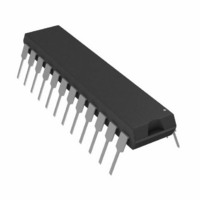AD7730BNZ Analog Devices Inc, AD7730BNZ Datasheet - Page 40

AD7730BNZ
Manufacturer Part Number
AD7730BNZ
Description
IC ADC TRANSDUCER BRIDGE 24-DIP
Manufacturer
Analog Devices Inc
Datasheet
1.AD7730LBRUZ.pdf
(52 pages)
Specifications of AD7730BNZ
Data Interface
DSP, Serial, SPI™
Number Of Bits
24
Sampling Rate (per Second)
1.2k
Number Of Converters
1
Power Dissipation (max)
125mW
Voltage Supply Source
Analog and Digital
Operating Temperature
-40°C ~ 85°C
Mounting Type
Through Hole
Package / Case
24-DIP (0.300", 7.62mm)
Resolution (bits)
24bit
Sampling Rate
1.2kSPS
Input Channel Type
Differential, Single Ended
Supply Voltage Range - Analog
4.75V To 5.25V
Lead Free Status / RoHS Status
Lead free / RoHS Compliant
For Use With
EVAL-AD7730LEBZ - BOARD EVALUATION FOR AD7730EVAL-AD7730EBZ - BOARD EVAL FOR AD7730
Lead Free Status / RoHS Status
Lead free / RoHS Compliant, Lead free / RoHS Compliant
AD7730/AD7730L
APPLICATIONS
The on-chip PGA allows the AD7730 to handle analog input
voltage ranges as low as 10 mV full scale. This allows the user to
connect a transducer directly to the input of the AD7730. The
AD7730 is primarily targeted for weigh-scale and load-cell
applications. The majority of the applications have a strain-
gage transducer whose resistance changes when subjected to
mechanical stress. Normally, the gages are configured in a
Wheatstone bridge arrangement. The strain gage is a passive
device and requires an excitation voltage (or in some cases a
current) to derive a voltage output. Two types of voltage excita-
tion can be provided for the bridge: dc excitation or ac excita-
tion. These are discussed in the following sections. While the
desire in most applications is to provide a single supply solution
(something that is aided by the AD7730’s single supply capabil-
ity), some applications provide a bipolar excitation voltage in
order to increase the output voltage from the bridge. In such
cases, the input voltage applied to the AD7730 can be slightly
negative with respect to ground. Figure 23 shows how to config-
ure the AD7730 to handle this type of input signal.
DC Excitation of Bridge
In dc-excitation applications, the excitation voltage provided for
the bridge is a fixed dc voltage. Connections between the AD7730
and the bridge are very straightforward in this type of applica-
tion as illustrated in Figure 23. The bridge configuration shown
is a six-lead configuration with separate return leads for the
reference lines. This allows a force/sense effect on the load cell
excitation voltage, eliminating voltage drops caused by the exci-
tation current flowing through the lead resistances. In applica-
tions where the lead lengths are short, a four-wire configuration
OUT+
IN+
IN–
EXCITATION VOLTAGE = +5V
OUT–
Figure 23. Typical Connections for DC-Excited Bridge Application
AIN2(+)/D1
AIN2(–)/D0
REF IN(+)
REF IN(–)
AIN1(+)
AIN1(–)
ACX
ACX
AV
DD
MUX
EXCITATION
AGND
CLOCK
AC
DV
BUFFER
DD
6-BIT
DAC
+/–
+
–40–
DGND
PGA
AND CONTROL LOGIC
SERIAL INTERFACE
can be used with the excitation voltage and analog ground con-
nected local to the AD7730’s REF IN(+) and REF IN(–) termi-
nals. Illustrating a major advantage of the AD7730, the 5 V
excitation voltage for the bridge can be used directly as the refer-
ence voltage for the AD7730, eliminating the need for precision
matched resistors in generating a scaled-down reference.
The application is a ratiometric one with variations in the exci-
tation voltage being reflected in variations in the analog input
voltage and reference voltage of the AD7730. Because the
AD7730 is a truly ratiometric part, with the reference voltage
and excitation voltages equal, it is possible to evaluate its total
excitation voltage rejection. This is unlike other converters
which give a separate indication of the rejection of reference,
analog inputs and power supply. The combined (total) rejection
for the AD7730 when moving the excitation voltage (which was
also the power supply voltage) was better than 115 dB when
evaluated with a load cell simulator.
Drift considerations are a primary concern for load cell applica-
tions. It is recommended for these applications that the AD7730
is operated in CHOP mode to accrue the benefits of the excel-
lent drift performance of the part in CHOP mode. A common
source of unwanted drift effects are parasitic thermocouples.
Thermocouple effects are generated every time there is a junc-
tion of two dissimilar metals. All components in the signal path
should be chosen to minimize thermocouple effects. IC sockets
and link options should be avoided as much as possible. While
it is impossible to remove all thermocouple effects, attempts should
be made to equalize the thermocouples on each leg of the differen-
tial input to minimize the differential voltage generated.
MICROCONTROLLER
POL
CALIBRATION
MODULATOR
SIGMA-DELTA A/D CONVERTER
SIGMA-
DELTA
RDY
REGISTER BANK
PROGRAMMABLE
AD7730
GENERATION
DIGITAL
FILTER
CLOCK
RESET
MCLK IN
MCLK OUT
SCLK
CS
DIN
STANDBY
SYNC
DOUT
REV. A












